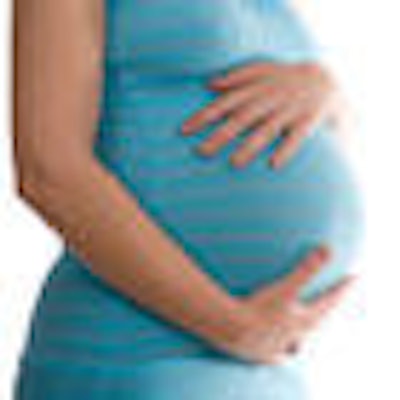
Women who have four or more children have more than three times as many untreated dental caries as women with fewer children, further evidence that childbearing is related to oral disease, according to a study in the Journal of Dental Research (July 14, 2010).
The study involved data on 2,635 U.S. women who participated in the Third National Health and Nutrition Examination Survey between 1988 and 1994. Untreated caries was present on an average of 21.7% of the dental surfaces of women with four or more children, compared to 6.1% among women with fewer children, the researchers reported.
“The need for improved provider and consumer oral health education
is real.”
— Kim Boggess, M.D., University of
North Carolina at Chapel Hill
The results build on the team's earlier observation that women with more children lose more teeth (American Journal of Public Health, July 2008, Vol. 98:7, pp. 1263-1270).
In addition, the percentage of decayed surfaces was significantly associated with lower socioeconomic status, black race, lack of dental insurance, lower dental care frequency, and lower age. However, the investigators found proof of a direct relationship between parity and the percentage of decayed surfaces.
"Parity was related to untreated caries regardless of socioeconomic status, although this is a particular problem among those of lower socioeconomic levels," said lead investigator Stefanie Russell, D.D.S., Ph.D., M.P.H., an assistant professor of epidemiology and health promotion at New York University (NYU). "We have also just completed a study on periodontal disease and parity and found the same relationship. So it's probably a combination of a biological effect on soft tissues of the oral cavity and a behavioral effect."
Supported by other research
Another recent study in the Journal of the American Dental Association found that three-quarters of women in the analysis did not receive routine dental care during pregnancy (May 2010, Vol. 141:5, pp. 553-561). A significant number of women reported that they believe or were told that going to the dentist during pregnancy is unsafe.
Lead investigator Kim Boggess, M.D., an associate professor in the department of obstetrics and gynecology at the University of North Carolina at Chapel Hill School of Medicine, and her co-investigators also determined that being older than 36 years, being Hispanic, having an annual income of less than $30,000, flossing infrequently, and receiving no dental care when not pregnant are all associated with the lack of routine dental care during pregnancy.
Combined with the new study, these findings "underscore the need for more research to identify potentially modifiable biological reasons [for this gap in dental healthcare] as well as barriers to care," Dr. Boggess said. "The need for improved provider and consumer oral health education is real and needs to be addressed if we are to impact the oral health and well-being of reproductive-age women and their children."
Clear correlation
Dr. Russell, one colleague from NYU, and another from Yale University included in their study women ages 18-64 years who had been pregnant at least once, received at least one dental examination, and had at least one tooth in their mouth.
Their analysis revealed that women with four or more children had similar average total amounts of filled and decayed tooth surfaces as women with fewer children, at 17.9% and 18.5%, respectively. However, the higher-parity women had significantly higher average proportions of untreated decay than did the lower-parity women, at 21.7% and 6.1% of all affected surfaces, respectively.
The team also undertook regression modeling and found that higher parity was an important predictor of higher levels of decayed but unfilled dental surfaces, and that being single was an important predictor of lower levels of filled surfaces but not of higher levels of decayed surfaces.
However, when the researchers performed a robust path analysis -- a form of modeling that shows the strength of associations between variables -- they could find no information to explain why the relationship between parity and untreated caries occurs across all socioeconomic and educational strata.
Dr. Russell told DrBicuspid.com that she and her colleagues are expanding this line of investigation to examine what affects access to dental care for pregnant women and how barriers can be dissolved.
"Pregnancy is a time when a woman focuses on herself for the sake of her own health and the health of her baby, so we should take that opportunity to improve oral health," she noted. "Studies have shown that dental care during pregnancy is safe and should not be deferred until after birth when the woman may be less likely to focus on herself."
Copyright © 2010 DrBicuspid.com



















